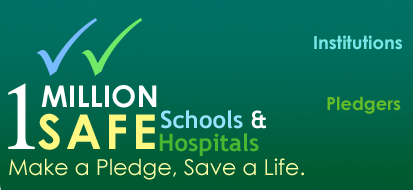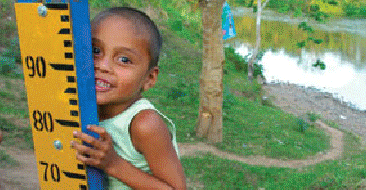|
What is a Safe Hospital?
A Safe Hospital ...
- provides health services efficiently at all times, even after a disaster or emergency.
- is structurally strong against hazards and will not be heavily damaged under strong events nor collapse under extreme events, causing injury to patients and staff.
- is resilient and organized with contingency plans in place.
- has a health workforce trained to keep the hospital functional in times of crisis.
What can I do to help?
- People in unsafe schools, hospitals and health facilities are at the greatest risk of losing their lives!
- Children in schools and the sick in hospitals and health facilities are the most vulnerable people in times of disaster.
- When schools are damaged, learning opportunities are disrupted, and the quality of education drops. When hospitals and health facilities are destroyed, the treatment of the sick is hampered and saving of victims during a catastrophe becomes difficult.
- The safety of schools, hospitals and health facilities at all times can be improved through a concerted effort and commitment of all stakeholders.
- The safety of schools, hospitals and health facilities has to be enhanced to address the increasing risk due to climate change and other disasters – natural and man-made.
- Countries vulnerable to climate change effects and hazards must take steps to reduce the risks of disasters to schools, hospitals and health facilities.
What are the objectives of the campaign?
UNISDR, WHO, UNESCO, UNICEF, World Bank, ADB and other partners aim to raise public awareness and create a demand for safe schools, hospitals and health facilities that will: Protect the lives of school children and the sick by ensuring that proper safety measures are installed;
- Assure the continuity of the functions of hospitals and health facilities in the treatment of the sick, and provide safe places in schools at all times;
- Improve the risk reduction capacity of all stakeholders of schools, hospitals and health facilities.
What is a Safe School?
A Safe School ...
- provides a learning environment where the children's education, health, safety and secuirty is assured at all times.
- is structurally sound and will not collapse during disasters.
- is a community of learners committed to a culture of safety, aware of the risks and prepared to respond in case of emergencies and disasters.
- has minimal disruption even after a disaster and thus continues to provide a healthy learning environment for the youth.
What is the minimum age to pledge a school or hospital?
We recommend schooling age or 5 years old. Younger kids can pledge as long as they know the actions that need to be undertaken related to their pledge.
|


